In the internet age, an artist can’t place their music on all the possible distribution platforms by themselves.
Therefore, they need to know the nitty gritty.
Music distribution services save artists the time and effort they would use to market their music and instead concentrate on their unique talents.
According to music distribution market trends, the value of the worldwide music distribution services market was $911.87 million in 2020.
It may reach $1683.08 million by 2030, expanding at a CAGR of 6.2% from 2020 to 2030. Therefore, experts are doing something right.
Depending on the budget and services an artist needs, there is a distribution middleman to cater to them.
For example, some middlemen only distribute the music, others distribute and collect royalties on the artist’s behalf, while others are even involved in marketing the music.
So how much does it cost?
In a nutshell, the distributor earns money by charging the artist a fixed charge for submitted work or by receiving a portion of royalties on sales.
Flat rates for single submissions of about two tracks are typically approximately $10 and $20 for an extended play record (EP).
The artist payment covers up to 6 songs.
On the other hand, it will cost about $40 for an album with more than six tracks. The typical royalty reduction is 15%.
Some distributors may also charge an annual fee to keep the material accessible in shops.
These fees vary between $10 and $50, depending on the number of songs submitted.
A distributor who works for a percentage cut with an artist or label may not earn money. Nobody gets the money if the song flops.
The distributor incurs expenses. Many ask for a fee to cover the cost of managing the submitted material.
Let’s look into the cost of music distribution in detail if you’re starting from scratch.
A Detailed Guide to the Cost of Music Distribution
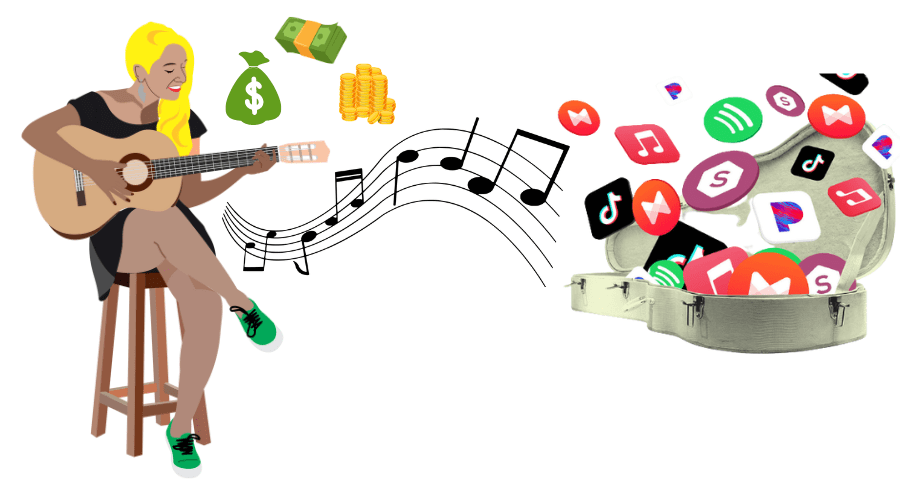
Music distributors have several options that they can use to price their services. The prices they set are the costs you must incur to have your music distributed.
Although there are hybrid pricing systems, below are common aspects of music distribution costs:
Release Price
A release price model is used mainly by distributors targeting artists who do not produce many projects.
It only makes sense to pay for each release if you do not have tons of releases. If you have many releases, another pricing model will work for you.
Below are the release prices for various platforms:
- CD Baby charges a release cost of $9.95 for a standard single and $29.95 for a pro single with a single song. However, if you need to release an album, CD Baby charges $29 for a standard release and $69 for a PRO release. Currently, CD Baby has an offer where you only pay $4.99 for a standard release and $24.99 for a PRO release for both singles and albums. The fee is a one-time fee per release, and no annual fees are required.
- Distrokid charges an annual fee of $19.99. Afterward, you can upload as many songs and albums as you like. Also, Distrokid does not charge any commission.
- Soundrop offers $0.99 per release. The price is affordable because other platforms provide the same services at higher prices.
- Boost Collective is a free site; you can keep 100% of the royalty.

Monthly or Annual Fee
If you are an artist who produces a lot of music in a year, then you prefer a distribution service that charges you per year and does not limit the number of projects you can release.
Platforms that charge an annual or monthly fee attract artists who have invested in their skills but have yet to break out.
The following are subscriptions for distribution platforms:
- Distrokid would charge $20 per year.
- AWAL does not charge any fees.
- Qobuz charges a standard fee of $19.99 per month or $129.99 per year. However, for the premier plan, they charge $17.99 and $179.88 per month and year, respectively. In addition, they have an additional offer of a family plan which goes for $21.90 per month and $215.88 per year. Again, however, you have to live at the same address. After paying the initial fee, CD Baby, Inc. does not charge monthly or annual fees.
- Tunecore charges a monthly fee of $14.99.
Out of all the music distributors, Distrokid has the quickest music distribution timeframe. They distribute your songs 10–20 times faster than any other distributor.
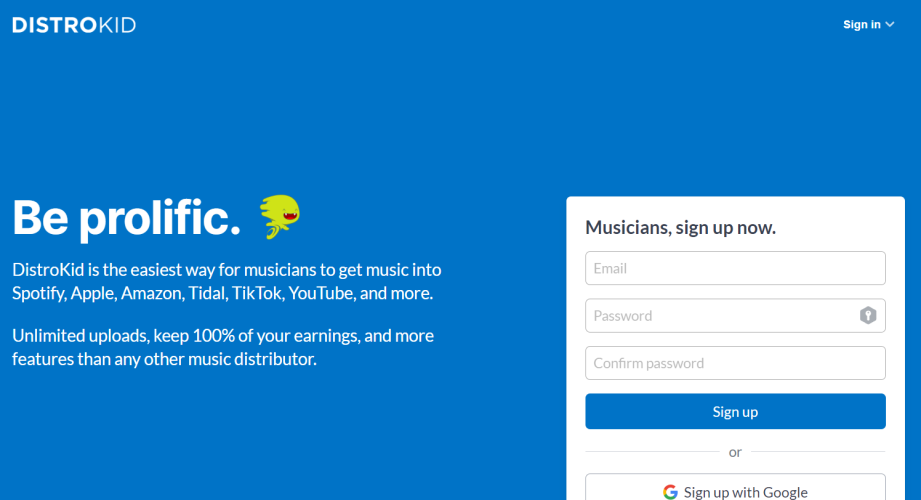
Percentage of Royalties
Royalties are the artists’ payments after streaming or buying their work. There are various types of copyrights that the royalty collection is dependent on.
- Mechanical royalties are paid when a third party produces and distributes your music. The US government set the price of mechanical royalty at 0.091% per digital download and CD.
- Public performance royalties are payable to an artist whose music is played publicly without their content by a third party. In the USA, the publishers and songwriters share this royalty 50/50.
- Synchronization license fees are payable when someone uses your music to create other derivative works. The synchronization license fee is a subscription that you can attain at $4.99 a month.
ISRC/UPC Codes
An ISRC number is an international code that identifies music videos and sound recordings, while the UPC number tracks an album.
To get UPCS, you can use platforms like:
- CDBaby, which provides UPCs for free
- BarcodeLove, which charges $0.6 per barcode for 100 UPC, $0.5 per code for 200 UPCS, and $0.35 for 400 UPCS
- DiscMakers, which will provide a UPC barcode for you at a discount or even for free

Identifying music and video recordings using the International Standard Recording Code, ISRC Code simplifies identifying product infringement.
An ISRC code for your recording as an artist or producer might help you earn more royalties and support copyright claims.
In addition, it could be a requirement for distribution on specific well-known platforms such as Itunes and CD Baby.
Because most distributors will assign one to your music during the distribution process, ISRC codes shouldn’t cost anything.
However, you have an option to purchase the code before distribution by paying an annual fee, in which case you become a “registrant.”
Most companies will charge a cost of $95, which enables you to generate up to 100,000 ISRC codes in a year.
However, you can get the ISRC code from ISRC for $32 per code. The additional $30 is for registration, while a single Isrc will only cost $2.
Cover Songs Fee

These royalties are also applicable to cover songs.
If you are releasing a cover song on streaming services, you don’t have to worry about payment of royalties because the streaming services will distribute the royalties accordingly.
However, if you want to reproduce and distribute the cover song, you will need a mechanical license that will cost you 9.1 cents per downloaded song.
In exchange for a mechanical license, you must pay the musical composition’s copyright holder a mechanical royalty fee, usually 9.1¢ per track or 1.75¢ per minute of playing time.
There are three methods to receive a mechanical license for a cover song in the United States:
- Through the legally mandated compulsory licensing system
- Through the Harry Fox Agency, if they administer the song’s musical composition.
- You can get the license directly from the publisher of the music.
Youtube Content ID
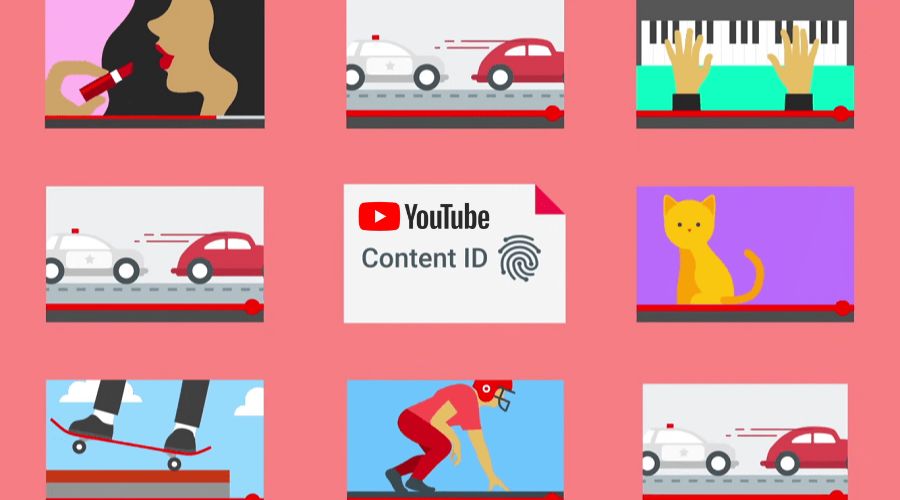
According to YouTube, “the automated and scalable system allows copyright owners to identify videos that include content they own.”
To avoid this issue, you can use any of these three choices.
- You can obtain a license to use any musical material you like. The permit costs $50 and saves you from the problems with YouTube infringement.
- You can create your own unique, personal content.
- You can subscribe to sites that use stock-free music, such as Epidemic Sounds or Envato Elements, which charge $15 a month, or Artlist for $199 per month.
In this case, Youtube Content ID helps you protect your music. Below are additional advantages of the Youtube ID.
- It simplifies the process of withdrawing music used without your consent.
- It allows you to choose whether third parties can use your music.
- If you allow the use of your music, you will receive compensation.
As a music creator, these features ensure you can fully monetize your music on Youtube without losing out to malicious distributors.
However, if you are a cover song creator, you need to get the licenses mentioned above to be able to reproduce and redistribute the Music on YouTube.
Bulk and Special Aggregators
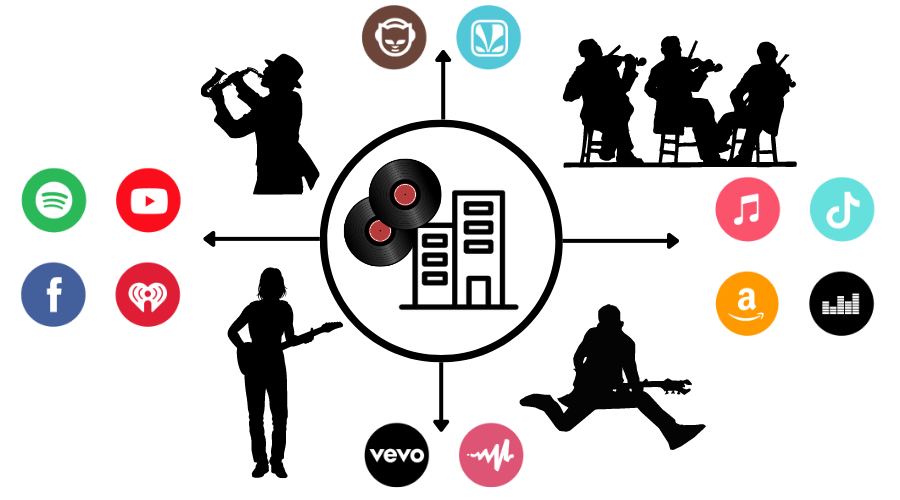
Some distributors will share your music but are selective about the genre, while others allow all types of music.
It’s important to know, especially for musicians specializing in multiple genres.
Bulk Aggregators
Bulk aggregators are music distributors who do not specialize in a given genre.
Instead, they distribute all music by artists of all genres. These distributors have their pros and cons.
For instance, working with artists from different genres gives them more insight into the music industry, and their experience can benefit your distribution.
But, unfortunately, if they overlook your niche, that might hurt your distribution.
For singles and albums:
- TuneCore charges a flat fee of $10 for singles and $30 for an album for the first year, and $50 for subsequent years.
- CDBaby sets $13 for a single and $49 for an album.
- TuneFlow charges $5 for singles but offers a 10 percent discount on a three-year and 20 percent on a five-year subscription.
- Musician charges $9.9 per release and a 30% commission for starters, where your music is only available on one site.
- Horus charges an annual fee of 5 euros for a single artist and 30 euros for a label.
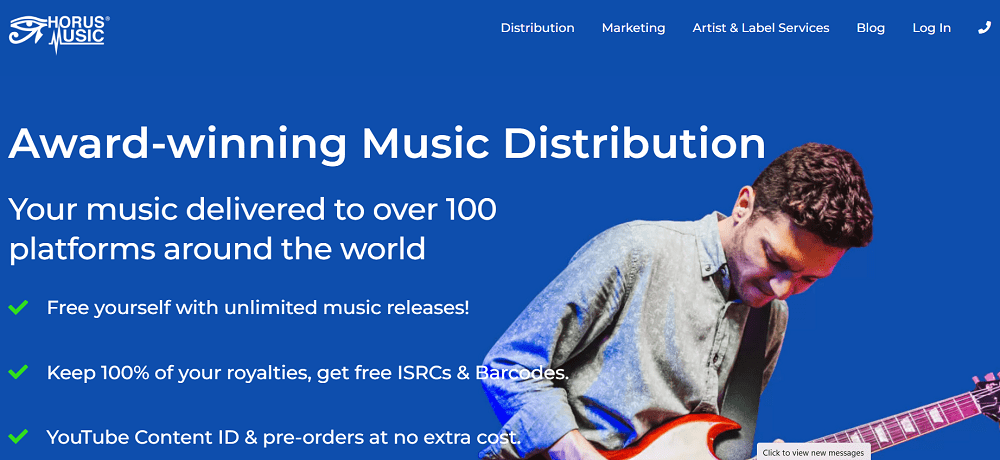
Special Aggregators
Specialist aggregators distribute music from given genres.
Their specialization allows them to develop better networks in their given industries; hence, if they handle your music, you are sure it is getting the attention and inroads it requires.
However, getting these aggregators to handle your music requires a significant amount of effort on the artist’s part.
The reason is that they only work with artists with a strong repertoire and a large fanbase.
Therefore, if you want to work with specialized aggregators, you must do prior work to prove yourself.
The exclusivity of their operations makes it difficult to disclose the cost of their distribution services.
Nonetheless, most range between 10 percent and 30 percent on commissions.
Some of the particular distributors for bands include The Orchard, InGrooves, and State 51 Distribution.
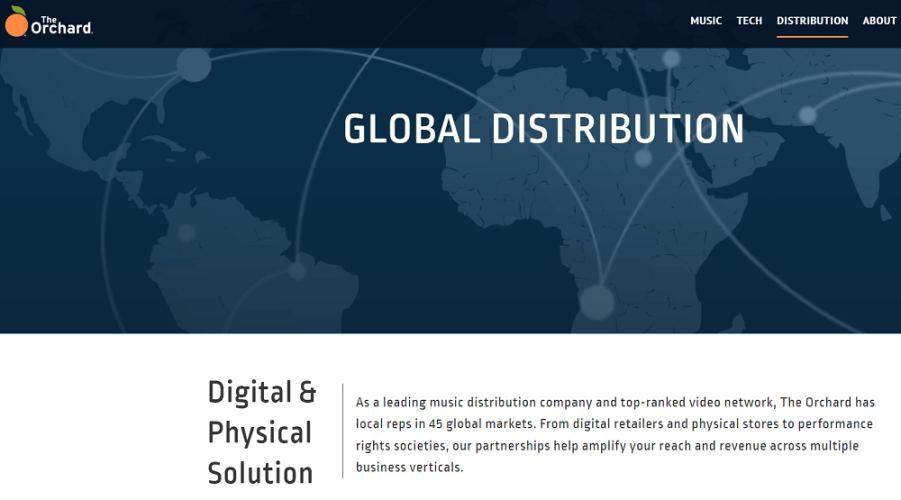
The Orchard charges roughly 30 percent in commissions, while the charges for InGroove range between 10 and 30 percent.
If you make electronic music, you can work with:
- Beatport Baseware charges 15% of your revenue,
- Label-Engine charges about 15 percent of your revenue.
- Label-Worx, take between 10 and 20 percent of your royalties.
- Proton charges 30$ commission and the artist or label takes the remaining 70%
Distribution For Independent and Record Label Artists
Having a distribution company that tracks the use of your art in different arenas and collects the money for you is excellent.
But for these extensive services, these distributors want a share of the pie. Therefore, their pricing model is inclusive of a percentage of the royalties.
Artists Under a Label

If the artist has a record deal, their distribution costs are alongside other management and promotion fees.
As a result, such artists walk away with even a smaller share of their music’s revenue.
If it is a promising artist who is just starting, the percentage will range between 13 and 15 percent.
On the other hand, if the artist is established but has not broken onto the world stage, they might be able to negotiate between 15 and 18 percent with distribution companies such as the Orchards or Create music.
However, if the artist is a global superstar, they might be able to negotiate between 18 and 20 percent.
Only in an Indie record deal can you get an artist negotiating a 50-50 deal with a record label.
Independent Artists
Choosing the best distributor for your music is entirely a personal decision. Only artists understand the goal of their music.
Therefore, while selecting a distributor for your piece, consider your objectives and what you want your music to do.
If you want to keep your royalties, there are options such as FreshTunes, Boost Collective, and Amuse.
However, it would help if you gave up some conveniences, such as long distribution time and low customer service response.
Do your research comprehensively. There are no one size fits.
Free Release, Pay Percentage
Other music distribution companies remove the upfront or recurrent fee for the artists.
Nevertheless, these platforms limit the number of songs uploaded at a given time, while others take high percentage fees.
The free platforms are:
- Amuse allows for free distribution to all major platforms, and the artist can keep 100 percent of the royalties, but you can only upload 12 songs a year. So, essentially, one piece per month.
- AWAL charges a 15% commission on every sale you make.
- Modify allows free distribution, but they take up to 15% of your commissions. However, free distribution only allows 11 stores.
- RouteNote offers free distribution with a 15% commission for your artistic work.
- STEM allows free distribution with a 5% commission. However, it is hard to get accepted on this site.
- Songtradr allows free distribution but takes 10% commission for DSP and 40% for sync licensing.
- For releases, TuneCore charges a 20% commission.







